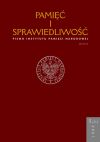Mechanizmy fałszerstw wyborczych w latach osiemdziesiątych XX w. na terenie województwa miejskiego łódzkiego w świetle solidarnościowej prasy
Mechanisms of Election Forgery in the Nineteen Eighties in Łódź Province in the Light of Solidarity Underground Press.
Author(s): Krzysztof KolasaSubject(s): History
Published by: Instytut Pamięci Narodowej
Summary/Abstract: Communistic authorities of Poland were trying to simulate democracy, thus they had to decide to be verified in elections every few years. All plebiscites that were organised in Poland in the period between the war and 1988 national councils elections were forged. The hereby sketch shows, in the light of Solidarity underground press, mechanisms of election forgery used by the authorities in the nineteen eighties in Łódź province during elections to national councils, the parliament and referendum. In the period between Solidarity foundation until the first partly free elections to the houses of parliament held in June 1989 the authorities decided to conduct four plebiscites. National councils elections were held twice (on 17th June 1984 and 19th June 1988), once were held parliament elections (13th October 1985) and referendum (29 November 1987). Election forgery used by the authorities had various form and conditions. In the current work the time criteria was taken under consideration, that is the moment of using forgery: before elections, during elections or after elections. Preparations of the authorities each time would vary from propaganda campaign to arrests of independent activists. Moreover, people with voting rights could be made to take part in elections by threats or promises, providing special people for election committees and to be confidential agents, and manipulating the quantity of voting rights holders (it was underrated). During the plebiscites the authorities were not only threatening the voting rights holders, but also members of the election committees, voting in substitution was allowed, vote cards were put into ballot boxes in the name of the absent, voters were forced to come by threats, promises and specially organised transport, there were prepared vote cards in envelopes for the elderly to “make voting easier”. The authorities tried also to enlarge the so called “visible” turnout. The last stage was forgery made after the end of plebiscites. The most popular were altering numbers, adding numbers in front of written ones, crossing numbers and replacing them with new ones, writing the results in pencil, which was later corrected or written over with a pen, including invalid votes into the turnout, as well as all of those who signed the ballot lists, and even adding cards in the name of the absent. All these methods were nothing when confronted with imperious decisions of chairmen of district election committees taken together with 1st secretaries of PZPR (Polish United Workers’ Party). Such forgery was implemented by committees of all levels. The methods used show that imagination of the authorities to legitimise their power was just unlimited.
Journal: Pamięć i Sprawiedliwość.
- Issue Year: 11/2007
- Issue No: 1
- Page Range: 359-371
- Page Count: 13
- Language: Polish

